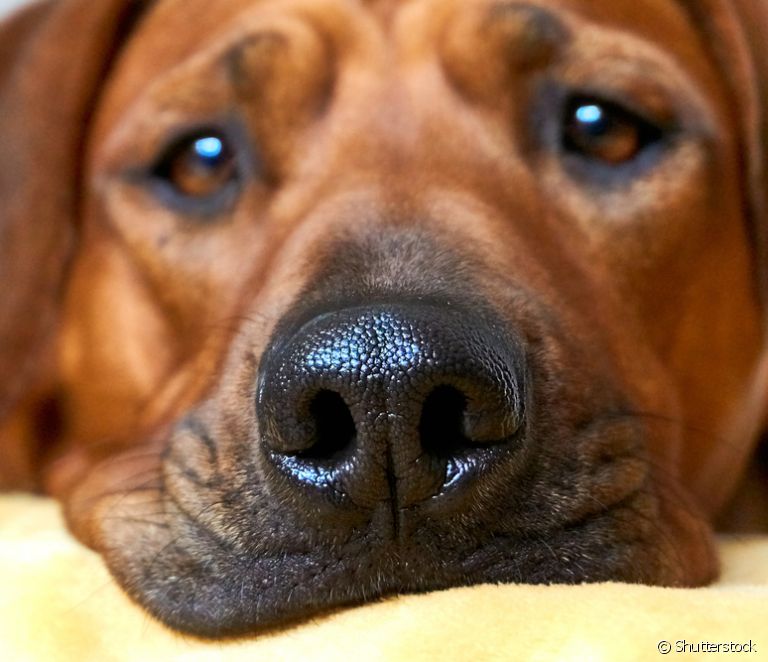Why is the dog's muzzle always cold?

Table of contents
When you think of a dog's nose, "cold" is one of the first words that come to mind. After all, a simple touch to the area is enough to notice that the little dogs have a cold and wet nose. But is this normal, or can it be indicative of a problem? What can cause a dog to have a cold nose and when should the guardian seek help? To find out more details, the Paws of Cas unravels everything you need to know about the icy dog nose below, just take a look!
Why is the dog's muzzle icy?
Finding a dog with a cold nose is absolutely normal and is often an indication that they are healthy. It is through the muzzle that dogs regulate their body temperature, so this area is usually damp and chilly.
It is important to understand that the anatomy of the dog is different from ours, so the sweat glands - located in the pads - do not have the function of thermoregulation in these animals. In fact, it is through breathing that dogs do thermal regulation - and this is even one of the reasons why a dog in hot weather is more panting.
Another important point is that the humidity of the nose is able to improve the capture of aromas in the air, making the dog's sense of smell even more powerful. In this region, there is a thin layer of mucus that helps to "trap" the odor molecules in the nose, which favors the animal's ability to absorb and identify smells.
In short: if you find a dog with a cold nose, you hardly have any reason to worry. The problem, in fact, is when this is accompanied by symptoms that demand greater attention.





A chilled dog's nose is no problem, but keep an eye out for changes in the area
A cold dog's snout is usually natural and not a problem, but if you happen to find your dog with a cold and shivering muzzle, it may be that he is cold. If this happens on a warm or normal day, it is worth seeking the help of a veterinarian. In addition, other situations that need attention are:
Hot dry dog snout - In general, the temperature of the nose can fluctuate a lot during the day, but if you notice that the muzzle is hot and dry for a long time, it can be a sign of fever in a dog.
Injured dog snout - Wounds (especially those that don't heal) and scaling are always a warning sign. Canine leishmaniasis, as well as lupus, can trigger symptoms like this and need to be diagnosed as soon as possible.
Swollen dog snout - Swelling of the area usually indicates that an insect has stung your pet. A dog stung by bees, for example, may have a swollen muzzle and need to undergo medical evaluation.
In addition to the icy nose, dogs have several curiosities involving the organ!
Now that you know why dog snouts are cold and that this should not be a cause for concern, it is good to understand why it is so important to take care of this canine organ! The dog's sense of smell is one of the most developed senses of these animals, and therefore it must be preserved. To give you an idea, dogs have 200 million olfactory cells, a number that is approximately 40 times greater thanthan the number of cells humans have.
Another interesting curiosity is that the nose is the dog's fingerprint. Each animal has a unique and exclusive design on the surface of the muzzle, which serves to determine their "identity" in the same way as it happens with humans - the difference is that, for us, the fingerprint is on the fingers.

